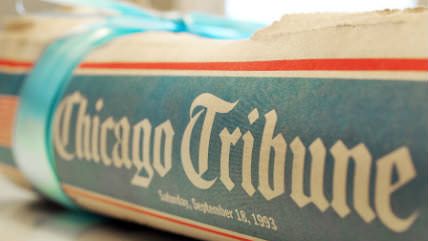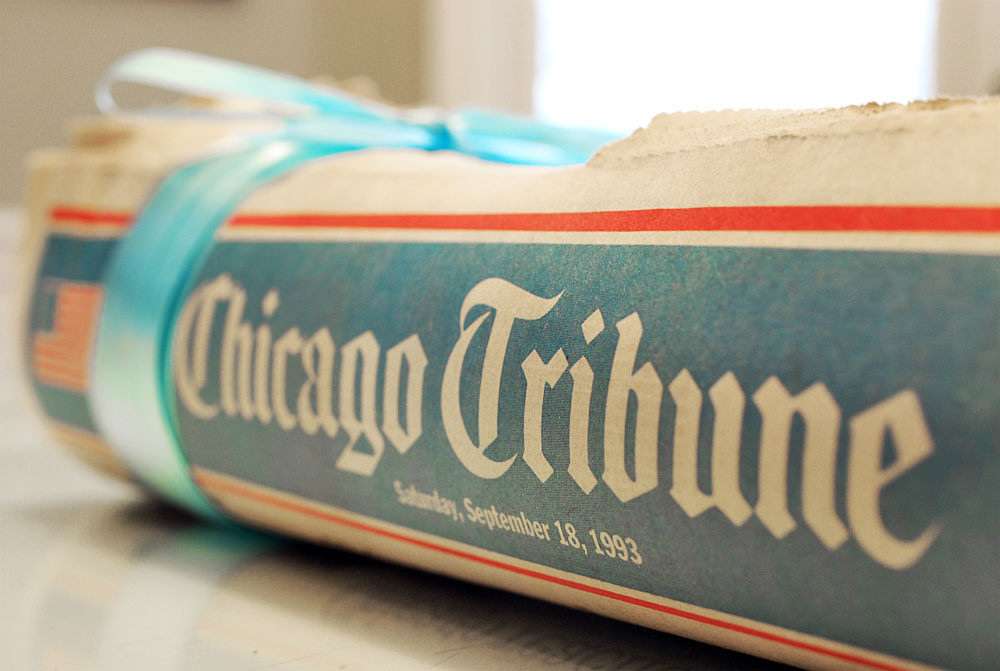Jail Newspaper Ban Not Justified by Threat of Clogged Toilets and Paper Mâché Weapons
Court declares newspaper ban in Chicago-area jails to be a violation of inmates' First Amendment rights.


Inmates in Chicago-area jails will now be allowed to read newspapers, after a federal judge ruled that a policy banning them was in violation of the First Amendment. The unconstitutional ban has been in place in Cook County since 1984.
The case was brought by Gregory Koger, who was arrested in 2009 for misdemeanor trespassing, simple battery, and resisting arrest. Koger was sentenced to 300 days jail time, the last four months of which he spent in Cook County Jail.
While there, a friend sent Koger letters, books, magazines, and a copy of the Chicago Tribune. The Tribune alone was returned to Koger's friend, with a form marked "no newspapers." In October 2013, after an initial complaint received no comment, Koger filed a suit against Cook County claiming that the newspaper ban violated his First Amendment rights.
Here's the rationale Cook County offered the court for the newspaper ban:
(1)newspapers are flammable,
(2) they can cause sanitation problems (inmates can usethem to clog toilets, and they are issued with greater frequency than other publications,thus increasing the volume of material that must be disposed),
(3) newspapers can befashioned into weapons using paper mâché, and
(4) they can cause violence (inmatesmay learn about the nature of other inmates' charges or about outside gang activity).
In his opinion, Judge Matthew Kennelly of the U.S. District Court for the Northern District of Illinois concluded that the newspaper policy could, indeed, be rationally connected to a legitimate government interest, in this case jail security. And yet inmates are allowed to possess books, magazines (including those made from the same material as newspapers), paper bags, notepaper, drawing pads, envelopes, greeting cards, playing cards, letters, photos, toilet paper, and extra bedding. "All of this material can, like newspapers, be used to start fires, clog toilets, or make weapons," Kennelly pointed out.
"Defendants contend that newspapers are uniquely flammable," he continued.
But … there is not a speck of evidence to support this contention (indeed, it is undisputed that defendants did not consider empirical evidence about the flammability of newspapers in fashioning the policy). … Moreover, because the jail already limits inmate possessions to a property box, allowing newspapers would not increase the amount of such material in circulation. On this record, no reasonable factfinder could find that lifting the ban on newspapers would have more than a de minimis impact on the number of fires, clogged toilets, or paper mâché weapons in the jail.
The judge further noted that even if safety or waste issues are a legit concern, permitting newspapers only in jail libraries and dayrooms should mitigate these problems without completely violating inmates' First Amendment rights—a suggestion from Koger that Cook County had simply shrugged off. "The existence of this obvious, easy alternative to a total ban suggests that banning newspapers is an exaggerated and therefore unreasonable response to the jail's concerns," concluded Kennelly, addng that "the newspaper policies of other penal institutions provide further evidence that the ban is an exaggerated response to concerns about institutional security."
In response to the court's decision, Cook County Sheriff Tom Dart (who has also been in the news recently for pressuring Visa and Mastercard to stop payment processing for the website Backpage) said that, "historically, newspapers posed significant issues in the jail." However, the county is "making arrangements to provide our detainee population with access to newspapers in a controlled and safe manner."



Show Comments (82)